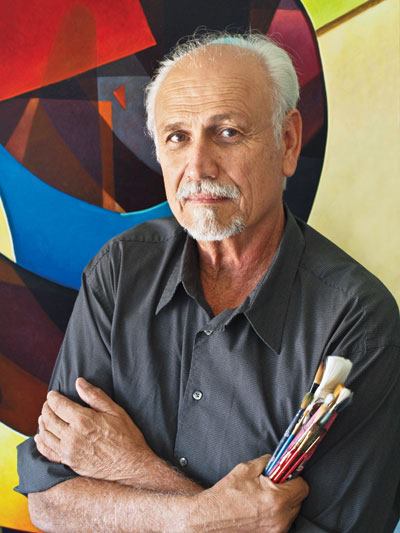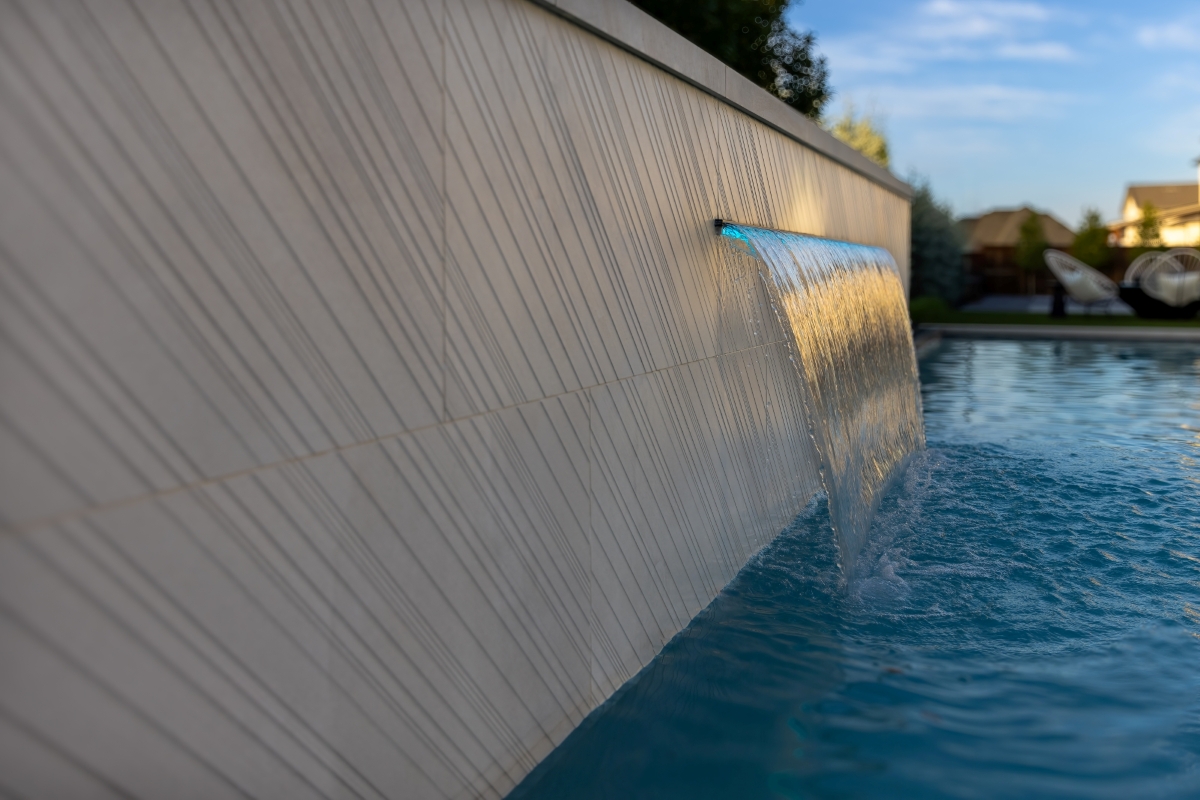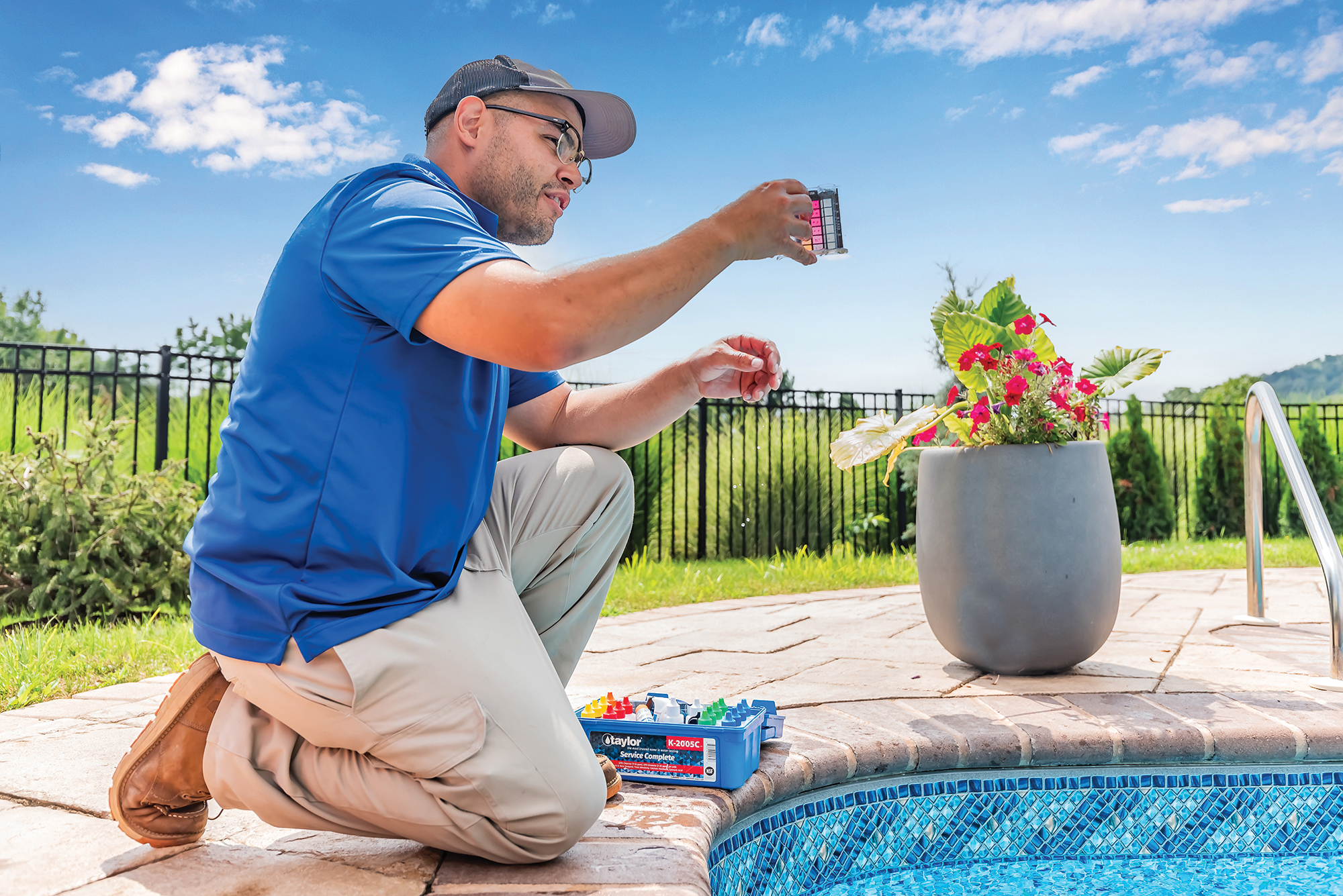Many don’t know it, but Don McKinney leads a double life. By day, he’s a senior designer at Swan Pools in Lake Forest, Calif. His pools have won a number of national and international design awards in categories such as free-form and geometric design, perimeter-overflow and backyard landscapes. But on his own time, he’s Don Ray McKinney, contemporary artist, known for his large-scale, abstract acrylic paintings. His artwork is derived from “automatic drawing” in which the hand draws randomly on the page, free of conscious thought, and is thus interpreted as an expression of the subconscious mind. His work has been sought after by private collectors and institutions alike; one piece is in the prestigious Butler Institute of American Art in Youngstown, Ohio. His paintings are shown in prominent exhibitions around the world, winning numerous Best of Show awards, among other honors.
In fact, he has two exhibitions in the works: a 20-year retrospective solo exhibition at Sacramento State University’s Union Gallery, and a second solo exhibition in January 2013 at the Juanita Harvey Art Gallery at Midwestern State University. Though an accomplished artist for more than 30 years, the anticipation of the response to his work still excites him.
“People project their own feelings onto [my pieces]. I like it when I discover something when I make it that makes me go, ‘Wow, this is really referencing this or that.’ But I keep it to myself and when someone else finds it — it’s an aesthetic connection, and that’s really a great feeling,” he says. “On the other hand, sometimes people find things that I don’t know. I’ve had people tell me they see Tinkertoys when they look at it.”
In addition to being an active artist, McKinney also has been an instructor of the arts, teaching everything from art history and color theory to design, drawing, painting and sculpture at various universities in the United States. Though his work at Swan Pools keeps him busy, he makes it a priority to guest lecture as often as possible in hopes of inspiring the next generation of artists, as he himself was once inspired.
McKinney found his artistic calling in the unlikeliest of places — the middle of the Pacific Ocean.
In 1971, after serving in Vietnam, 21-year-old McKinney was stationed in Hawaii as an imagery analyst for the 96 Delta branch of the U.S. Army Intelligence. His job of interpreting aerial photography for the Army brought him in contact with like-minded, visual people. Among them was a group of highly educated African-American artists. They befriended him, inviting him to see their studio. He fit right in.
“Until this moment, I was not aware of what it meant to be an artist. You live and grow up around art, but you don’t step in and see it actually being made,” he says. “It was an indescribable moment. It was a feeling of bewilderment and excitement — that you’re at the grass roots or beginning of something being created. … It made me feel that I had actually found something that I wanted to do with my life.”
Inspired to pursue his dream, McKinney went back to school after completing his tour in the Army and received a Bachelor of Arts from Humboldt State University. He then obtained his Master of Fine Arts degree at Ohio University in Athens, Ohio, where he stayed on as an instructor.
So how does one go from being an artist to a pool designer? They say necessity is the mother of invention. In McKinney’s case, it was becoming a father six times over that necessitated a leap to a more lucrative field. “I had more and more children, and it was a struggle to teach back in the late ’80s and early ’90s,” he says. “I knew I had to find something else to support my growing family.”
That something else turned out to be pools.
“I’d heard of this industry where you design swimming pools and thought it had a great sense of romance to it,” McKinney recalls. “Designing swimming pools in Southern California? That sounds like a dream!”
He arranged a meeting with Swan Pools, and set out to reinvent himself as a pool designer. Though he lacked construction knowledge, his background as an artist helped tremendously. “I’ve always looked at designing the outdoors as building a sculpture,” he explains. “It’s working with space, whether it’s a two-dimensional surface or three-dimensional space. The homeowner becomes the medium — you have a certain set of criteria that sets the limitation of your design.”
Sixteen years and many happy clients later, McKinney sees his new body of work as an extension of his art.
“The pool industry allowed me to be creative and be an artist and employ all the knowledge of being an artist and still make something special for someone else. There’s nothing else like it,” he smiles. “That’s why it’s a special industry.”
Down to a fine art
- A pigment is a finely ground powder that gives its color to another material. Pigments must be suspended in a binding medium such as oil, egg or water to form paint. Though the first pigments used in painting were ground from earth, minerals and organic matter, most are now synthetically manufactured.
- Automatic drawing was developed by founders of the surrealist movement in the 1920s. Artists such as Salvador Dali, Max Ernst and Joan Miro based their revolutionary methods on Sigmund Freud’s work with free association, dream analysis and the unconscious mind.
- In 2006, casino mogul Steve Wynn agreed to sell Picasso’s “Le Rêve” for a then-record $139 million, but accidentally poked his elbow through the canvas while showing the painting to friends the day before the sale was to be completed.
- For more information on McKinney’s art, visit www.donraymckinney.com




